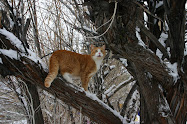by Carol Valera Jacobson 2008
So.
In a round-about way, I asked my mother if she would be my oral history partner,
and she agreed without hesitation.
I was surprised by how quickly she responded in the affirmative.
* * *
“A timeline,” I asked her, “Could you please write me a time-line of your life; say, including the years we lived in California. 1960 to 1970.”
Mom smiled her shy smile; remembering, I think, what she was doing then. She had four young children; I was 10, Arthur was 8, Thomas 6 and David was a wee four years old. I had finished 4th grade at Sunset Elementary in Craig. Mother was 31, still young and curious and leaving a conventional marriage.
She’d bought a 24-passenger school bus, had it painted a desert sand color, removed nine rows of seats, loaded everything she thought she would need in the back and threw us kids in on top, and drove to Palo Alto, California where she hoped she find relief from her fatigue. After a while, she started attending Foothills College in Los Altos Hills. We rented a house three blocks from Stanford University. For a long time, she used that big bus to go to the store, church, school. Then she parked that bus in the back of the driveway and bought a VW bus to drive us around
We attended Mayfield Elementary, then we went to elementary school on the Stanford campus. Film strips, chalk dust, noisy, happy children. I went to class with the young sons and daughters of the Stanford faculty. Bright children. I was eleven. The same age as Harriet the Spy.
* * *
“Don’t you remember,” she asked, “the marches I took you to . . . the civil right marches?”
We went to a Unitarian church in Palo Alto. We ate marzipan and raw almond/cashew butter, sunflower seeds, oatmeal and fresh figs from the trees in the back yard.
1965. I started 5th grade. My mother was going to school, living on child support and a social revolution was swirling around her, sweeping through the county, to create a more liberated society.
Hippies are defined as: a young person, especially in the 1960s, who rejected accepted social and political values and proclaimed a belief in universal peace and love. Hippies often dressed unconventionally, lived communally, and used psychedelic drugs.
* * *
When I try to remember her in those years, my impression was of a thin woman, with long black hair, hiding her teeth with her lips just a little bit when she smiled. Shy. She wore cotton: simple shifts and straight dresses without binding, tight waistbands. Practical, functional, even funky clothes when all the other mothers she’d known in Craig were wearing straight skirts with their arms bound in tight sleeves, tottering on pointy-toed shoes with too much heel.














